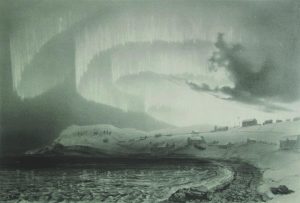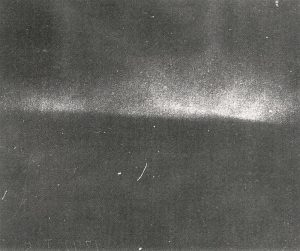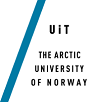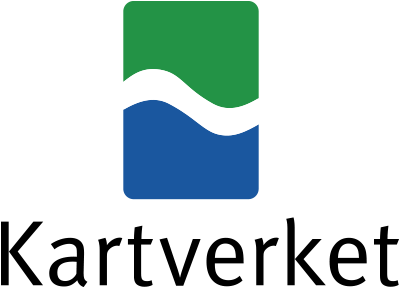About the Norwegian Centre for Space Weather
Mission

Photo: Njål Gulbrandsen
Space weather is driven by the Sun and refers to the variations of near-Earth space environment that can affect human health, the functioning and reliability of various spaceborne and ground-based technological and, in consequence societal systems.
The Norwegian Centre for Space Weather (NOSWE) was established in collaboration with the Norwegian Space Agency in 2014 as a semi-independent department under Tromsø Geophysical Observatory, one of the major space weather service providers in Norway, at UiT – The Arctic University of Norway. Following the endorsement of the responsible government agency in 2018, NOSWE becomes member of the International Space Environment Service (ISES) as the Regional space weather Warning Centre in Norway (RWC Norway) in 2019.
Objectives:
- to provide a single centralized interface for the region that may be a source for information and knowledge about space weather and space weather hazards for the various space weather user domains.
- to establish contact with national directorates, industries and activities that are vulnerable to or dependent on space weather for any reason, ranging from search and rescue and offshore drilling operations to the tourist industry and the power grid operator.
- to participate in space weather related research as well as the development and operation of products and services for monitoring, prediction of space weather and mitigation of space weather hazards.
- Being part of UiT – the Arctic University of Norway, NOSWE is a natural place for students of space related topics to find sources of information, thesis topics and work.
The content of the NOSWE website is currently available in English.
Organization

History

Norway has a long history in auroral research. The foundation that eventually lead to the current operations in Tromsø was actually set in Alta, starting with the scientific French “Recherche” expedition in 1838-1839, headed for the North Atlantic and Spitsbergen (amongst other places). The expedition team ventured into Altafjord and overwintered in Bossekop, Alta, where a resident artist Louis Bevalet produced a beautiful sketch of the aurora over the area.
The expedition lead to an increased interest in the region and the aurora over the years leading to 1882-1883 “The International polar year”, when 12 stations were established throughout the polar regions of the northern hemisphere – one of them, financed by the Norwegian Government, was set up in Bossekop. The station’s main objective was to make observations of the aurora, allowing also comparison to the Recherche expedition’s observations.

By the start of the 20th century, Alta had proved it’s worth as location for auroral research, and after intermittent research expeditions and auroral observations in the region (the oldest surviving photo of the Aurora was also taken at Bossekop by a German expedition scientist, Martin Brendel, on 5.1.1892.), in 1910 Kristian Birkeland persuaded the Norwegian government to set up a (world’s first!) permanent auroral observatory in Haldde, Alta. A major argument for setting up the observatory was that the scientific work there could aid in weather forecasting benefiting especially the local people dependent on fishing.
The observatory at Haldde was in use from 1912 to 1926. In 1918 the Geophysical Institute in Tromsø was established, and the Haldde observatory was put under its supervision, until in 1928 the operations were fully moved to Tromsø, at a newly established auroral observatory funded by the Rockefeller foundation. In 1968 this observatory became part of the newly established University of Tromsø.
Throughout the years, vast amounts of research related to the aurora has been conducted at the observatory, including work to determine the auroral altitude and spectrum, along with a variety of geomagnetic and ionospheric studies. Today this observatory, now called the Tromsø Geophysical Observatory, is reponsible for long-term observations operating, amongst other things, a chain of a total of 19 magnetometers across mainland Norway, Sweden and Barents Sea, together with ionosondes, riometers and all-sky cameras.
In 2014, the Norwegian Centre for Space Weather (NOSWE) was established under TGO to provide situational awareness and act as the contact point for, most importantly, government directorates and industries in issues concerning space weather, but also for the general public with related questions.
Partners
Stakeholders
![]() Tromsø Geophysical Observatory at UiT – The Arctic University of Norway
Tromsø Geophysical Observatory at UiT – The Arctic University of Norway
National Partners
 Norwegian Meteorological Institute
Norwegian Meteorological Institute
![]() Norwegian power system operator
Norwegian power system operator
![]() The Birkeland Centre for Space Science at the University of Bergen
The Birkeland Centre for Space Science at the University of Bergen
![]() The Kjell Henriksen Observatory at UNIS – The University Centre in Svalbard
The Kjell Henriksen Observatory at UNIS – The University Centre in Svalbard
European Partners (within the ‘Nordic Observatories Collaboration’)
![]() Finnish Meteorological Institute
Finnish Meteorological Institute
![]() Swedish Institute of Space Physics
Swedish Institute of Space Physics
![]() Sodankylä Geophysical Observatory
Sodankylä Geophysical Observatory
Norsk

Photo: Njål Gulbrandsen
Tromsø Geofysiske Observatorium (TGO) ved UiT Norges Arktiske Universitet er en av de ledende leverandørene av romværtjenester i Norge; hovedsakelig innen jordmagnetisme, men også innen ionosfære. Norsk Senter for Romvær (NOSWE) er et semi-uavhengig senter under TGO etablert og utviklet i samarbeid med Norsk Romsenter (NRS).
Mål:
- Å levere et enkeltstående, sentralisert grensesnitt for regionen som kan brukes som kilde til informasjon og kunnskap om romvær og romværtrusler i tilknytning til de ulike brukerdomenene innen romvær
- Å arbeide innen romværrelatert forskning så vel som innen utvikling av produkter og tjenester for prediksjon av og skadebegrensning av romværtrusler. Som en del av UiT Norges Arktiske Universitet, vil NOSWE være et naturlig sted for studenter med fordypning i romværrelaterte emner å finne informasjon, tema for avhandlinger og arbeid.
- Å etablere kontakt med nasjonale direktorater, industri og aktører som av ulike årsaker kan være sårbar ovenfor eller avhengig av romvær, det være seg alt fra redningstjenesten og offshore-aktører til turistindustri og radioamatører.
Innholdet på NOSWEs netsider er for øyeblikket tilgjengelig på engelsk og er levert i samarbeid med følgende institusjoner:
Interessenter
![]() Tromsø Geophysical Observatory at UiT – The Arctic University of Norway
Tromsø Geophysical Observatory at UiT – The Arctic University of Norway
Nasjonale samarbedspartnar
![]() The Birkeland Centre for Space Science, Universitetet i Bergen
The Birkeland Centre for Space Science, Universitetet i Bergen
![]() The Kjell Henriksen Observatory, UNIS – The University Centre in Svalbard
The Kjell Henriksen Observatory, UNIS – The University Centre in Svalbard
Europeiske samarbedspartnar
![]() Finnish Meteorological Institute
Finnish Meteorological Institute


